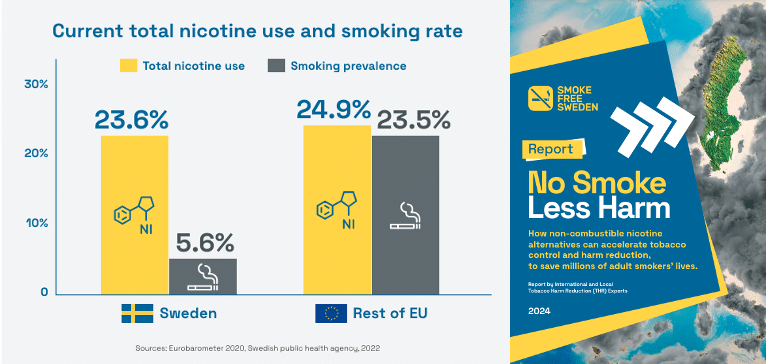
Nicotine illiteracy threatens pouches’ harm reduction potential: report
Nicotine pouches have the potential to be a “credible, viable, and safer” alternative to deadly cigarettes, but nicotine illiteracy and a lack of research need to be addressed for the category to reach its full potential, a new report has found.
Nicotine pouches have experienced explosive growth since their introduction in 2014. In the US, average weekly nicotine pouch volumes grew from just under 100,000 units in January 2019 to more than 2.5 million in July 2020, according to statistics cited in the report.
In light of nicotine pouches increasing popularity the report, entitled Nicotine pouches- a research and regulatory policy agenda to maximise public health benefits and minimise harms, aims to review currently available data on the product regarding its harm reduction potential.
The authors, Dr. Sudhanshu Patwardhan from the Centre for Health Research and Education (CHRE) in the UK and Dr. Karl Olof Fagerström, a nicotine researcher and member of the Snus Commission, also identifiy existing research gaps and possible regulatory approaches to avoid “unintended consequences”.
“Nicotine pouches can be reasonably expected to be of harm reduction potential if used for complete substitution by current users of risky forms of smoked and smokeless tobacco,” the authors write.
“However, consumers, regulators as well as healthcare professionals would need much more information than currently available to be confident about the net potential benefit of a new nicotine product category such as nicotine pouches.”
Regulatory uncertainty
Similar in appearance to Swedish snus, nicotine pouches are placed between the lip and gum. The pouches contain dehydrated nicotine, stabilizers, and flavouring encased in a pouch made primarily of plant fibers.
As nicotine pouches don’t contain leaf tobacco, regulations vary widely. In some countries they are banned outright, while other countries treat nicotine pouches like other traditional tobacco products.
The report notes that nicotine pouches have been introduced in many countries with “little or no dialogue or buy-in” from regulators, public health experts, healthcare professionals, or consumers. This dynamic has raised “concerns” among tobacco control advocates, the authors add.
Specific concerns include aggressive marketing tactics as well as fears that flavoured nicotine pouches may appeal to youth and thus become a “gateway” to nicotine addiction.
Research priorities for nicotine pouches
To help improve knowledge and awareness about nicotine pouches as a tobacco harm reduction (THR) tool, the report lays out a comprehensive research agenda.
Suggested topics for future studies include product chemistry, pharmacokinetics, and optimal nicotine levels, as well as research to determine the absolute and relative safety of nicotine pouches.
Other research questions that need to be answered include looking at who the intended consumers are, the likelihood of unintended use, and whether communication is understood.
The authors also recommend conducting studies related to product switching and whether nicotine pouches alter people’s intentions to give up tobacco and nicotine use.
Addressing ‘nicotine illiteracy’
In addition to existing research gaps, another major hurdle to establishing globally consistent regulations for nicotine products with harm reduction potential is widespread “nicotine illiteracy” among key stakeholders.
“As long as key influencers and decision makers wrongly consider nicotine in tobacco products to be carcinogenic and do not comprehend that nicotine can be used relatively safely…a launch of new products such as nicotine pouches is bound to evoke a negative knee jerk response,” the authors write.
They urge manufacturers to “plug the knowledge gaps around nicotine and THR among key stakeholder groups”, providing a “Stakeholder Matrix” for maximizing nicotine pouches’ harm reduction potential.
“A properly regulated, affordable, accessible, and appealing nicotine pouch category specifically targeted to current tobacco users as a cessation tool is much needed,” the authors conclude.
“A comprehensive research and nicotine education agenda will need to be prioritised by all stakeholders to maximise this category’s public health potential and minimise its unintended consequences.”




